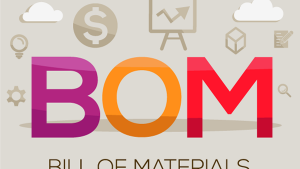- March 30, 2021
- Jeff Lazarto
- Reading Time: 4 minutes

As you evaluate Oracle’s SaaS solutions, it is critical to develop your bill of materials (BOM). Your BOM plays an essential role in your negotiation process, and when and how you develop it can impact your negotiation leverage. Here are some key considerations and why they are important.
Product Mapping to Requirements
The first step is to define your project goals and business process requirements. Try to get as detailed as possible, down to level 3 business processes. You should provide Oracle with a spreadsheet identifying each of these business processes and request Oracle identify the SaaS products they offer that are required to address each of the business processes (see table below). Your goal is simply to get an understanding of Oracle’s product capabilities as part of your vendor evaluation and to map the different solutions to each of your business process requirements.

Be sure to let Oracle know that these business processes might not all be in scope, but that you want to evaluate all of them as part your selection process, since this purchase would represent a long-term partnership commitment. Therefore, it is important that your evaluation is comprehensive enough to include potential longer-term business scenarios.
It is critical that Oracle understands this is not a confirmed BOM at this point in time. Once Oracle believes they have a confirmed BOM and they start internally forecasting a revenue stream, it becomes extremely difficult to remove items from the BOM without having a negative impact on the discounting and commercial terms.
BOM Development
After you have completed your product mapping exercise with Oracle, now your team can meet to determine or reevaluate your actual requirements and deployment sequencing. You most likely have a multi-year product roadmap developed prior to even evaluating product solutions.
Based on what you have learned from your product mapping exercise and capabilities evaluation, you can now determine if there are any changes you want to make to your roadmap and also identify your requirements timing over each of the next three years. This will enable you to identify exactly what products you will need and when you will need them and allow you to only include products in your BOM that you are 100% confident in deploying.
For the remaining outer year product requirements, you can include those in a separate list requesting Oracle price protect them based on the same discounting you receive for your current purchase. Remember that during negotiations you always have the option to increase your BOM by adding in some of the outer year requirements in order to sweeten the deal for better discounting and commercial terms.
Oracle Pillars
Before finalizing your BOM, keep in mind that Oracle provides discounting based on the list price of products within each of their SaaS pillars, which includes ERP, EPM, HCM, CX, and others. It is possible to negotiate discounting across multiple pillars, but it can be challenging as Oracle has been known to put the burden back on the customer to negotiate with representatives from each pillar separately. So, as you group your product requirements by year, you should also sub-group them by pillar. This may also influence how you choose to sequence your deployment roadmap, your BOM, and the products you request to price protect.
Positioning Your BOM with Oracle
Only after you have completed the above exercises and have internal alignment on your BOM should you communicate your BOM to Oracle and request a pricing proposal, along with price protections for the products you have identified as outer year requirements. Oracle will, of course, present you with different proposal options, with buying everything up-front as the most attractive pricing option.
The downside to this is that you would be paying for products you may never deploy, as outer year requirements or organizational priorities may change. Additionally, any renewal term price protections will be conditioned on your renewing for the same products and quantities or at least the same spend level within each pillar. Therefore, you risk significant renewal term price increases should you decrease your BOM at renewal, or you risk continuing to pay for products not deployed into your renewal years.
When you communicate your BOM to Oracle, be sure to let them know that this purchase represents a strategic long-term commitment to Oracle and that your BOM represents what your organization is comfortable committing to at this time. Your goal is to get Oracle to provide you with pricing and commercial terms reflective of the longer-term opportunity and not just this initial purchase.
Negotiating with Oracle
Oracle negotiations can be extremely challenging and frustrating for customers that do not know what a highly competitive deal construct looks like, in which case, you’re in a position of having to try to read Oracle’s willingness to improve their offer during your communications and interactions. Oracle’s sales teams are experts at playing this game because they do it every day and their deal data is not publicly available, which puts customers at a severe disadvantage. If you believe you will find yourself in this type of situation, you may want to consider hiring a third-party advisory firm that has relevant benchmarks and experience negotiating with Oracle every day.
Each deal you enter into with Oracle creates a precedent that is very difficult to overturn in the future, with your first deal being your most important as this is when your negotiation leverage is highest. Oracle will tell you that SaaS deals are only for three-to-five years and that you always have the option to not renew, and therefore have negotiation leverage in the future.
While you legally have the right to not to renew, this is hardly ever a practical option for customers and Oracle knows this. Besides, if you decide not to renew, Oracle will simply turn off your access, leaving you in a bind to figure out how to maintain business operations. It’s not like you can just migrate to a new solution overnight, plus your team will lose substantial internal political capital for suggesting migrating to a new solution upon expiration of your initial term.
To maximize your negotiation leverage with Oracle, be sure to only communicate your BOM and request pricing after you have completed your product mapping exercises, determined your product deployment sequencing, and have a clear understanding of your immediate and longer-term requirements.
Post a comment below, follow me on Twitter @jeffrey_lazarto, find my other UpperEdge blogs, and follow UpperEdge on Twitter and LinkedIn. Learn more about our Oracle Commercial Advisory Services.
Related Blogs
3 Common Mistakes When Counting Your Oracle Named User Plus License Requirements
NEW: Obtain Oracle SaaS Pricing with Free Estimate Calculator
Oracle Fusion ERP: 4 Key Terms to Negotiate
About the Author
